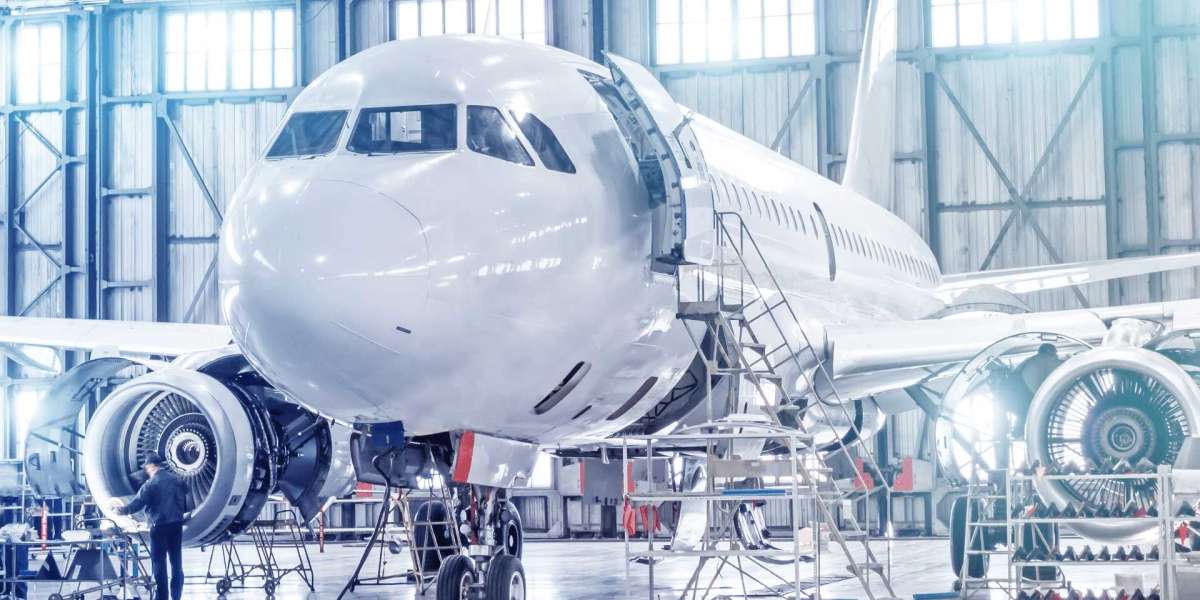The aircraft and aerospace industry is a dynamic and ever-evolving sector that has captivated humanity's imagination for decades. From the early days of aviation to the modern era of space exploration, this industry has pushed the boundaries of what is possible and revolutionized the way we travel and explore the cosmos. We will delve into the exciting world of the Aircraft and Aerospace Industry, exploring its history, technological advancements, key players, and the future that lies ahead.
A Journey Through History From Aviation Pioneers to Space Exploration
- The Birth of Aviation
The aircraft industry has its roots in the early 20th century when aviation pioneers like the Wright brothers, Orville and Wilbur, took their first flight in 1903. This historic event marked the beginning of a new era and paved the way for the development of aviation technology. Over the years, aircraft designs evolved, and commercial air travel became a reality, connecting people across the globe.
- World War II and Technological Advancements
The outbreak of World War II brought a significant boost to the aircraft industry. Nations engaged in a race to develop advanced military aircraft, resulting in groundbreaking technological advancements. Jet engines, radar systems, and pressurized cabins were just a few of the innovations that emerged during this time. These developments not only played a crucial role in the war but also laid the foundation for future commercial aviation.
- The Space Age and Beyond
The mid-20th century witnessed another significant leap forward in the aerospace industry with the advent of the Space Age. The launch of the Soviet satellite Sputnik in 1957 marked the beginning of human space exploration. It was followed by the Apollo moon missions, which culminated in the historic landing of Apollo 11 on the lunar surface in 1969. These achievements pushed the boundaries of human exploration and opened up a new realm of possibilities for the aerospace industry.
Technological Advancements Shaping the Future of Aerospace:
- Materials and Structures
The aerospace industry continuously pushes the limits of materials and structures to make aircraft and spacecraft more efficient and robust. Advanced composite materials, such as carbon fiber-reinforced polymers, offer high strength-to-weight ratios, enabling lighter and more fuel-efficient aircraft. Furthermore, additive manufacturing techniques, commonly known as 3D printing, have revolutionized the production process, allowing for complex geometries and reducing lead times.
- Propulsion Systems
Propulsion systems are at the heart of aerospace technology, driving aircraft and spacecraft to new heights. Jet engines have been the workhorse of the industry for decades, providing reliable and efficient power. However, the quest for more sustainable and environmentally friendly solutions has led to the emergence of electric propulsion systems. Electric aircraft and satellites with ion propulsion systems are being developed, promising reduced emissions and greater operational flexibility.
- Avionics and Automation
The integration of advanced avionics and automation has transformed the way aircraft operate and enhanced overall safety. Fly-by-wire systems, which replaced traditional mechanical controls with electronic interfaces, have made aircraft more responsive and easier to handle. Additionally, sophisticated navigation systems, including GPS and inertial navigation, have improved accuracy and reliability. Furthermore, the development of artificial intelligence and machine learning algorithms is paving the way for autonomous flight and unmanned aerial vehicles (UAVs).
- Space Exploration Pushing the Boundaries
While commercial aviation has greatly benefited from aerospace advancements, space exploration remains one of the most captivating aspects of the industry. Missions to Mars, such as the ongoing NASA Mars Rover program, continue to unravel the mysteries of the Red Planet. Private companies like SpaceX, Blue Origin, and Virgin Galactic are also revolutionizing space travel by developing reusable rockets and exploring the potential for space tourism. The future holds exciting prospects, including the colonization of other planets and the establishment of a human presence in space.
Key Players Industry Leaders and Innovators:
- Boeing
Boeing, an American multinational corporation, is one of the world's largest aerospace manufacturers. With a rich history dating back to 1916, Boeing has been at the forefront of aerospace innovation. The company designs, manufactures, and sells a wide range of commercial and military aircraft, including the iconic Boeing 747 and the cutting-edge 787 Dreamliner. Boeing's contributions to the industry have been instrumental in shaping modern aviation.
- Airbus
Airbus, a European multinational aerospace corporation, is a major competitor to Boeing. Headquartered in France, the company designs manufactures, and sells commercial aircraft known for their efficiency and advanced technology. The Airbus A380, the world's largest passenger airliner, and the A350 XWB, a long-range wide-body aircraft, are among their notable achievements. Airbus has been driving innovation in the aviation industry with its commitment to sustainability and electric aircraft development.
- SpaceX
Space Exploration Technologies Corp., better known as SpaceX, is an American aerospace manufacturer and space transportation company founded by Elon Musk. SpaceX has gained worldwide recognition for its ambitious goals of reducing the cost of space travel and making humans a multi-planetary species. With the development of the Falcon 9 and Falcon Heavy rockets, as well as the Crew Dragon spacecraft, SpaceX has achieved significant milestones, including the successful launch and recovery of reusable rockets.
The Future of Aerospace Dreams and Possibilities:
The aircraft and aerospace industry is poised for remarkable advancements in the coming years. Here are a few key areas that hold immense potential:
- Supersonic and Hypersonic Travel
Efforts are underway to revive supersonic travel, with companies like Boom Supersonic and Aerion Supersonic developing next-generation supersonic aircraft. These aircraft aim to cut travel times significantly, revolutionizing long-haul flights. Additionally, hypersonic travel, which involves speeds greater than five times the speed of sound, holds the promise of even faster transportation and reduced travel times for intercontinental journeys.
- Electric and Hybrid Aircraft
Electric and hybrid aircraft have gained significant attention in recent years as the industry seeks to reduce its carbon footprint. Companies like Zunum Aero and Ampaire are developing electric and hybrid-electric aircraft, which have the potential to revolutionize regional air travel by reducing emissions and operating costs. The combination of electric propulsion and advanced battery technologies is opening up new possibilities for greener and more sustainable aviation.
- Space Tourism and Colonization
Space tourism is on the horizon, with companies like Virgin Galactic and Blue Origin planning to offer commercial trips to space. This emerging industry aims to make space travel accessible to a wider audience, opening up opportunities for individuals to experience the wonders of space firsthand. Furthermore, the colonization of other planets, such as Mars, has been a long-standing dream of scientists and visionaries. Advancements in spacecraft Aircraft Aerospace Technology and life support systems bring us closer to making these dreams a reality.
Conclusion:
Aircraft and Aerospace are an incredible testament to human ingenuity and the relentless pursuit of progress. From the early days of aviation to the exploration of the cosmos, this industry has pushed the boundaries of what is possible and revolutionized the way we live and connect with the world. With ongoing advancements in materials, propulsion systems, avionics, and space exploration, the future of the aerospace industry looks brighter than ever. As we embark on this journey of innovation and exploration, the skies and beyond remain limitless, offering a world of possibilities for the aircraft and aerospace industry.








